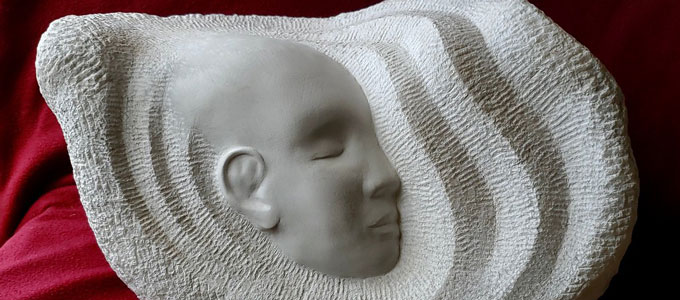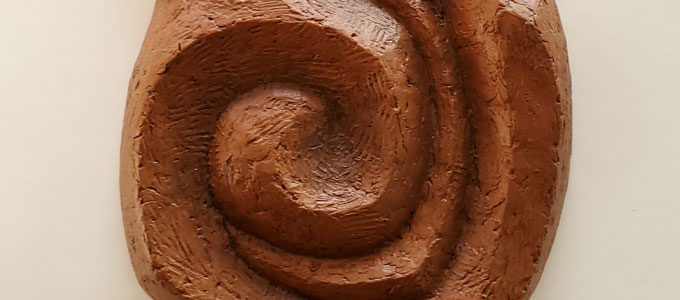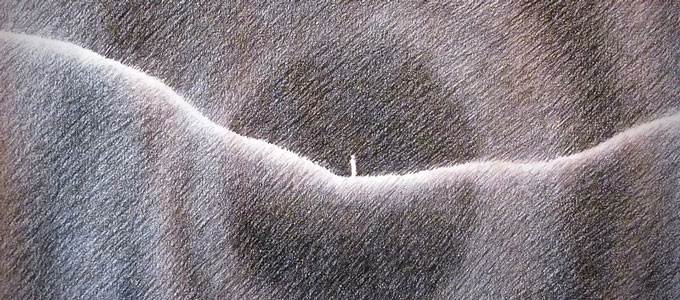|
A newsletter from the Anthroposophical Society in America
 |
|
January 10, 2022
Dear Members & Friends,
Greeting with a new year! Most of our sharing this time will be about programs, beginning with announcement of a new ASA Director of Programs, Tess Parker, whose excellent work and engaging presence you have probably experienced many times already, in the Holy Nights, the fall conference, and working with Laura Scappaticci over the previous three years. Here is Helen-Ann Ireland’s announcement.
Our visual elements this time are not photos but details from the sculpture and drawing of well-known artist and teacher Patrick Stolfo, a founding codirector and core faculty member of the Alkion Center at Hawthorne Valley, and an instructor and mentor for teachers at the Center for Anthroposophy in New Hampshire for some 30 years. Patrick’s work will be featured on the cover and in the gallery of our winter-spring being human print edition.
|
|
-L.jpg) |
|
Holy Nights
The grand idea of an “evolution of consciousness” is important for understanding why anthroposophy speaks of spirit and spirituality and religious figures like the Christ and the Buddha and of theological subjects like higher intelligences—but is not a religion. A materialistic phase in that evolution of consciousness brought us to where sacred traditions appear to many as quaint fabrications. Since the end of the second world war, even the religious festival of Christmas in the USA has become the terminus of a prolonged consumer marketing season. In the older tradition, now almost lost here, Christmas begins a 13-day season through Three Kings Day and Epiphany.
Anthroposophy, which brings the divided elements of culture back into renewed relationship, has also been reawakening and deepening the meaning of this season, from the human birth of Jesus (12/25) to the birth of the cosmic I AM (1/6) into the thirty-year old man. It is met as a period of potential opening for cosmic consciousness, looking back and forward. And in this year of altered life patterns due to the global pandemic, a rich array of gatherings were available.
On the national level, a third year of Holy Nights offerings was organized by Tess Parker and colleagues, with almost 1200 members and friends signing up. This took the form of a daily storytelling which unexpectedly took us back almost five thousand years ancient Sumeria for the Epic of Gilgamesh, king of Uruk, and his friend Enkidu/Eabani. Hazel Archer Ginsberg prepared, and more than twenty volunteers presented, a very affecting account of the surviving tablets of this story, for 22 minutes each day at 9am Pacific, noon Eastern times. The Gilgamesh epic was given a prominent place in world history by Rudolf Steiner, including during the refounding of the Anthroposophical Society at the end of 1923.
To take just one key thread, Eabani, who is in his very first incarnation and appears as a “wild” man living and communing with the animals, is brought into human society to temper the restless strength of Gilgamesh. Becoming friends, the pair undertake a series of heroic exploits which lead to the death of Eabani—and his subsequent sharing with Gilgamesh the knowledge of the life after death. Not coincidentally it is the restoration to Western culture of knowledge of repeated lives, reincarnation, and the laws of relationships we call karma, that are reported to have been Rudolf Steiner’s “core mission.”
The spiritually awakened leaders of ancient Mesopotamia and Egypt were also masters of the star wisdom of which our modern astronomy is the brilliant if mechanical product. For the Great Lakes Branch, Mary Stewart Adams, a “star lore historian” of considerable repute, also gave a daily fifteen minutes, packed with insight and artistic suggestions, an hour before the national offerings. Mary also gave a talk for the Greater Washington DC Branch: “The Missing Element: The Human Being as Mediator between the World of Nature and the Stars”; and her monthly ASA series on the “New Images of the Zodiac in the Cycle of the Year” has been opened to new registrants who can access the recordings to date and take part in the 2022 portions.
In the evenings the Holy Nights were celebrated by many branches and groups either by reading the same content on the same days, or having special Zoom presentations, or gathering face to face. The Sacramento Faust Branch did six evenings together and six on Zoom, reading Steiner’s lecture cycle on the John Gospel in relation to the other gospels. This was coordinated with the Los Angeles Branch, and it showed again how much can be gained by bringing the perspectives of a group to bear on a text.
The Chicago Rudolf Steiner Branch organized talks in the afternoon with notable presenters in Switzerland, Russia, Germany, the US and the UK. The NYC Branch had diverse online events rangeing from the Kogi people of Colombia to a remembrance of artist Kathie Young, from star wisdom to taking up acting after age sixty, along with explorations of light, radical empathy, psychosynthesis, and meditation and prayer. The Portland Branch planned to meet twice in their new library home. The San Diego San Miguel Branch met mostly outdoors in the afternoons. At the House of Peace north of Boston, there was a choral presentation of the Norwegian folk tale of Olaf Asteson through which Rudolf Steiner reawakened the meaning of the Holy Nights for anthroposophists. In Arizona, Joan Treadaway gave a program on the healing use of Raphael’s Madonna paintings. Many other groups met once or several times, or shared a common reading at home. And Lynn Jericho continued her tradition of “Inner Christmas” communications. “After 36 years of practicing the Holy Nights, I’ve come to understand that spiritual experiences require a slow integration.”
|
|
 |
|
Improv: a holiday story
Actress and teacher Laurie Portocarrero shared the following on Facebook on New Year’s Day:
In a year of uncertainty and ever-changing restrictions, I am struck by how much new creativity and generosity is to be seen emerging in all manner of unexpected places. Swaths of people fell sick including half our cast and its directors, so we had to cancel the Shepherds Play planned for performance at the Hillsdale Christian Community church. But because we couldn’t produce ours, the initiative-taking group of aspiring young people brought their youthful Shepherds Play to the church—and a bridge was forged that didn’t exist before.
We moved into the winter lamenting that a dear friend couldn’t fly back into the country to give us his annual one-man performance of A Christmas Carol. But because we didn’t have that, we instead created a community read-through of the beloved story, and found an unexpected new tradition—men and women, boys and girls of all ages came, donned bonnets and caps and scarves and muffs, and even the shy ones who began by insisting they just wanted to listen—read parts. There was accompanying music, much laughter, and and a potluck feast following of things inspired by the story—sausages, hot chestnuts, fruitcake, oranges, chocolates, eggnog.
To offset the stress and fragmentation of current life, artist and healer friends developed a series of healing evenings, offering gentle acupuncture and essential oils and lyre-playing. A Christmas concert brought together an eclectic assortment of musicians and singers. To make up for time lost being sick, our Speech Chorus loyally followed our ambitious leader into the speaking of another holiday gem, A Child’s Christmas in Wales, soon adding “T’was the Night Before Christmas” and beautiful verses by Adam Bittleston—and then it became obvious that these needed to be shared with the community.
The Christian Community choir joined this impulse, offering its songs, and then the Aurica Mundi singing group joined us also. And suddenly it all flowered into a full-blown Community Christmas Celebration of Song and Word. All ages came, all levels of experience and inexperience shared. The mix of different individuals and voices served the Arts, the artistry served the healing and strengthening of Community. Sparkling warmth, good will, camaraderie, joy and humor rippled through and out from the hall as people chatted and laughed and didn't leave.
And so very many other initiatives of creative warmth, in our community and over the globe. It is striking. In a time of anxiety and separation, division, darkness, and scatteredness, we can find that laughter and positivity are also contagious, that story and song created in community strengthen heart and wholeness and togetherness, boosting immune systems and lifting spirits.
May the new year be filled with many such creative impulses everywhere, bringing together the Arts and the Social Art, creating light in the darkness, bringing warmth to the cold, healing the wounded places, binding human hearts together in freedom and love.
To this sharing Marsha Post added, “Thank you for being an important part of all this, Laurie! It reminds me of two things. 1. Rudolf Steiner said that politics drives people apart and that the arts bring people into community. 2. One of my patients in the anthroposophical nursing home in Murrhardt, Germany told me of the following: During WWII when anthroposophical gatherings and the Anthroposophical Society were forbidden in Germany, anthroposophists would go to a concert and go to a particular usher to be seated. When seated, they would look around and see all their fellow anthroposophists sitting beside them. That was how the anthroposophists held their meetings and kept their freedom.”
|
|
 |
| First and second chances
Starting now through January 18 you can register midway through two major offerings with pro-rated tuition: for Applied Anthroposophy and, as noted above, for New Images of the Zodiac. Access to all previous recordings from these programs will be included, leaving you free to catch up on your own time as you jump right into our current courses.
Another catchup opportunity is with Dennis Klocek’s latest three-part webinar series: Alchemical Dew, Pathogens and Immune Response. It started January 4, continuing Jan 18 and Feb 1, but recordings are included. There’s a free short tutorial on the “solar length of day” which starts off from the observation that a leaf has a hot side and a cold side—and leads us on from there into seasons and planting and the life-cycle of the Earth.
A second newsletter of the O’Neil Group has been issued by Steve Brannon and Mark Riccio. This group works with the discovery of an organic compositional form in Rudolf Steiner’s writings by George O’Neil, an illustrious member of the ASA active some forty to sixty years ago, and elaborated by Florin Lowndes. The first article of this new issue is an excellent introduction both for reading Steiner and for thinking about reality.
|
|
 |
| Catching up
Because there is always so much going on, short catch-ups and sharings have become a regular category here.
MysTech has a new opening of its study courses this week; check them out here. “MysTech intends to cultivate the ground both in the human soul and in industry whereby a healthy Man-Machine relationship can be realized.”
Forty minutes drive north of New York City, “The Pfeiffer Center and its farming collaboration with The Fellowship Community offer a three-month Summer Farm Internship and a nine-month Extended Farm Internship. Together, the two internships offer a complete farming experience, from planning to planting to harvest, at a busy, diversified, community-based biodynamic farm. Based upon the three pillars of education, care of the land, and agricultural production in service to the community, our farm has nine acres under cultivation, 39 acres of pasture and hay, the only dairy herd in Rockland County, NY, a team of draft horses, and an apiary, all centered in a community of people and institutions working from the insights of Rudolf Steiner.”
WECAN, the Waldorf Early Childhood Association of North America, opens registration soon for its online conference February 10-13, “Toward a Kinder, More Compassionate Society: Working Together Toward Change.” This year’s conference will include marionette performances of Huichol and Haudenosaunee (Mohawk) legends.
Jonathan Hilton of astrosophy.org has started a new series of letters to accompany the site’s many publications and courses around the “new star wisdom” developed by Willi Sucher with help from Elisabeth Vreede. This newest letter is on “Venus and Pluto and the Encounter with Evil.”
|
|
 |
|
The poems of Rumi are very widely appreciated. Nancy Christensen sent us a link to one entitled “The Guest House”—perhaps because it begins, “This being human is a guest house. / Every morning a new arrival...” It’s a good coda for the Holy Nights.
Thanks to Patrick Stolfo for sharing his work, and thank you for reading, and be well!
John Beck
Editor, being human
editor@anthroposophy.org
Anthroposophical Society in America
|
|
|
|
 |
|